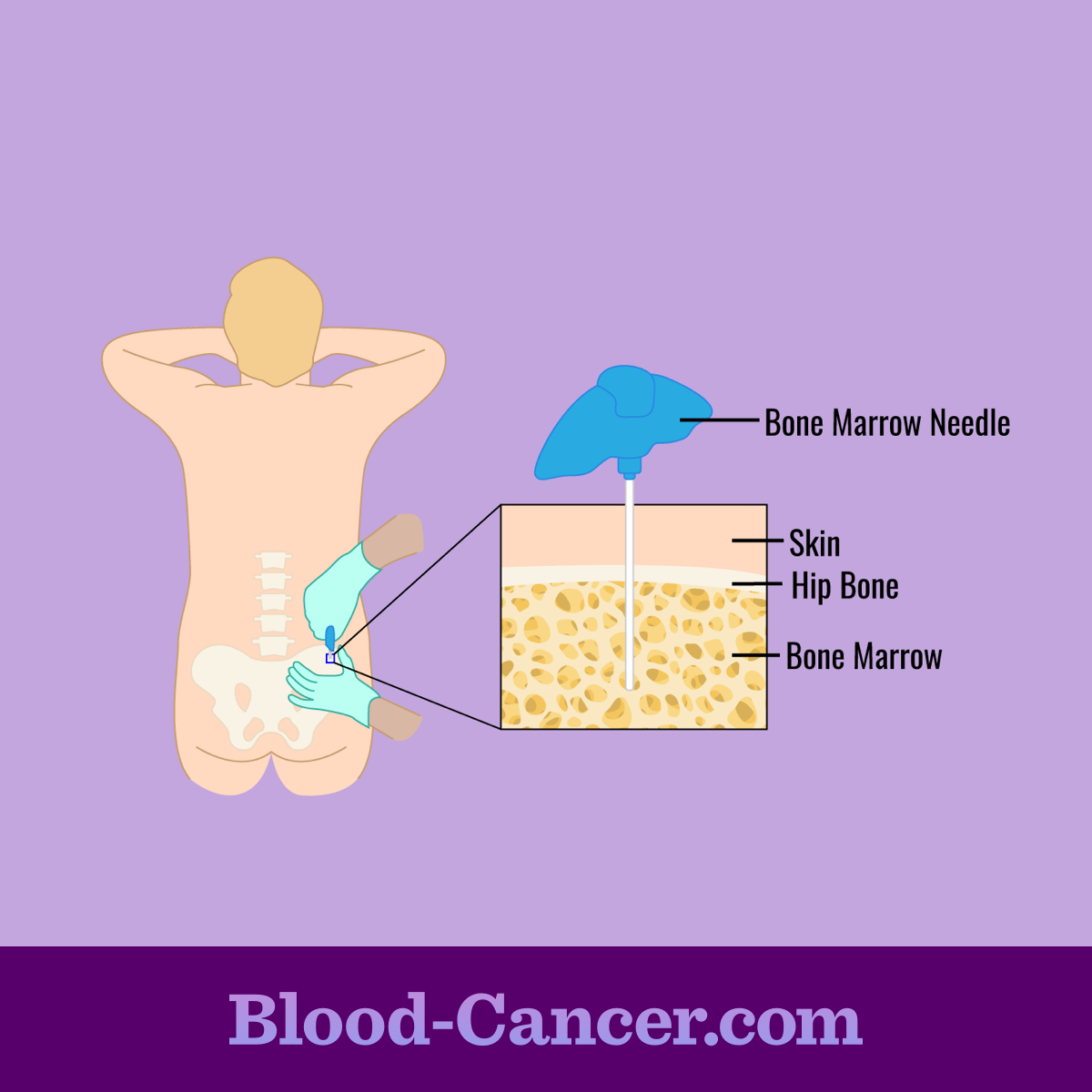How are Bone Marrow Tests Used to Diagnose Blood Cancer?
Reviewed by: HU Medical Review Board | Last reviewed: February 2018 | Last updated: May 2023
Two of the tests that are commonly run to determine if a person has blood cancer (and to determine what type of blood cancer they may have) are a bone marrow aspiration and a bone marrow biopsy. In addition to being used during diagnosis, these tests may also be used to monitor how treatment for blood cancer is working or to diagnose infectious diseases potentially involving the bone marrow. These tests can usually be performed at the same time and collect samples of the bone marrow, which is the spongy tissue in the middle of bones where blood cells are produced.1
The bone marrow contains stem cells, which are immature cells that can become different types of blood cells, including red blood cells, white blood cells, and platelets. The bone marrow also has fibrous tissue called stroma.2 The liquid portion of the bone marrow is sampled with a bone marrow aspiration, and the more solid portion of the bone marrow is sampled with a bone marrow biopsy.3
Bone marrow aspiration
Bone marrow aspiration is a sampling of the tissue, typically taken from the center of a large bone, such as the hip bone. The aspirate (material collected) is sent to the laboratory for testing, including looking at the cells under a microscope and using special stains to find cancer cells (immunohistochemistry). In addition, flow cytometry is often used. Flow cytometry is a test used to identify cells based on the types of antigens, or markers, on their surface.1,4
Figure 1. Bone marrow aspiration
Bone marrow biopsy
A bone marrow biopsy removes a core sample of the bone marrow and is sent to the laboratory for examination, which includes an assessment of the cellular structure and detection of potential lesions or disease.2
How aspirations and biopsies are performed
The bone marrow aspiration and biopsy may be performed by a hematologist (blood disorders specialist) or an oncologist (cancer specialist). The procedure is usually performed on the hip (pelvic) bone, but it may be done on the shin bone (tibia) in children under 1 year of age.2,3
The aspiration uses a large, hollow needle to remove some of the liquid bone marrow. Although a local anesthetic (to help numb the area) is used, most patients experience some pain for a brief time when the marrow is removed. The bone biopsy is done at the same time with a large needle that is twisted in to remove a small piece of bone. Patients usually feel pressure and tugging and may experience some brief pain.1,3
Follow-up care
After a bone marrow aspiration and biopsy have been performed, pressure is applied to the location where the needle was inserted, and a bandage is put over the insertion point. The site should be kept bandaged and dry for at least 24 hours. Rigorous exercise and activity should be avoided for a day or two, but people generally can return to their normal activities.3
The bone marrow samples are sent to the laboratory for testing and evaluation, and it may take several days to get the results of these tests.
